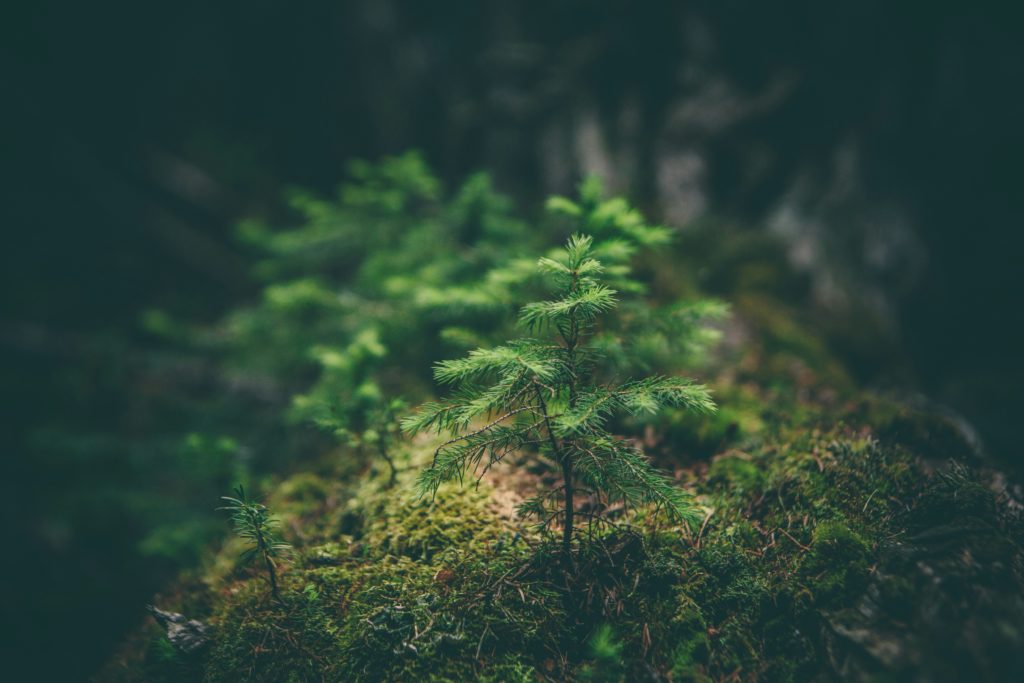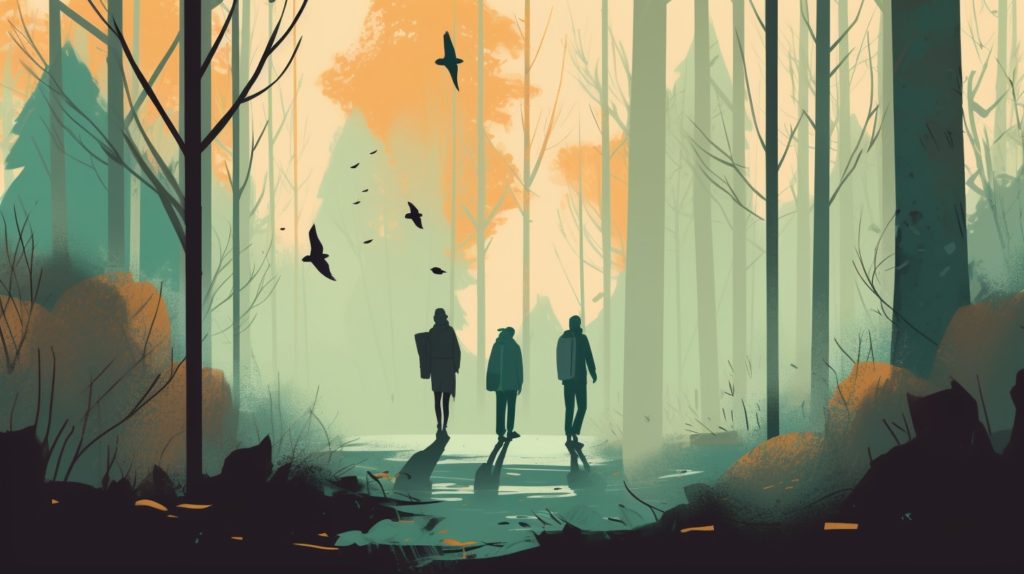Fancy saving the world and getting paid to do it?
This may seem more straightforward if you’re a bit younger and studying for an earth sciences degree. But what about those of us mid-profession, wishing a career switch at 30 to put our skills to use for the planet?
Well, for all you 30-something, wannabe-career-switchers out there, we have good news for you. It’s never too late to switch to the dark “greener” side!
Whether you want to work in biodiversity, the environment, ecology, sustainability, conservation, the climate (or any of the other labels we humans have separated ‘Nature‘ into), starting a career switch at 30 is not as tricky as you may think. So, here’s our advice for switching to an eco-career at 30 years old.

Why a career switch at 30s (and beyond) is an excellent time for change
Switching careers at this age may seem daunting. But there are many reasons why this stage of your life is a great time to do so. Here’s why:
1. You have a lot of skills to offer a nature-based employer already
People worry that they need a specific degree to get a nature job – and think that without this, there’s no chance. But It’s definitely possible to get a job in nature without a science degree.
Don’t underestimate the value of your previous experience! Even if it’s in a different industry, many roles in nature require your unique perspective and the skills you already have. For example, project managers, communicators, and leadership roles are highly sought after by nature employers. So, instead of thinking you’ll need to start from scratch, consider ‘sidestepping’ to a sustainability, biodiversity, or climate-focused employer.
2. You’re clearly passionate about the industry
Transitioning careers later in life demonstrates your passion for nature and a real commitment to the industry – qualities that employers highly value in the nature sector.
3. You may already have contacts or a professional network
Depending on what type of role you’re aiming for, at this stage in your professional life, you may have already built up a network of contacts who can support your career shift.
4. You know what really matters to you…
…both in the workplace and for your health and personal life. Having a clear sense of this should help you align with organizations whose values and practices match your own. Knowing what you want from a workplace allows you to be more selective and ensure that your next career move is more fulfilling.
Real-life examples of 30+ career switchers

There are so many nature-loving career switchers (from various professional backgrounds) who’ve already taken this leap. In fact, both the author of this post and the founder of Wildya changed careers in their 30s – and haven’t looked back!
Take my own journey as an example:
“At the age of 36, I realised something big. I had 15 years of copywriting experience and was working in marketing for the outdoor industry – helping sell more t-shirts to people who didn’t actually need more t-shirts. It wasn’t making me happy, and I was heading towards burnout. So, I took a leap of faith towards my real passion – and I haven’t looked back since!”
Rosie Howell, freelance nature writer
And here’s what Wildya’s founder, Oliver Dauert, had to say about making a successful career change at the age of 33:
“I left my ‘dream’ job in the tourism industry when I was 31 and never looked back. Nature has always been my #1 priority, and now I am living my actual dream of showing up for nature 24/7. Is it all easy, sunshine and butterflies? No frogging way! But I have never felt more fulfilled in my entire life. “
So now you know why your 30s are a good time to chase your dream job in conservation, biodiversity, or climate – and you’ve heard from individuals who’ve done just that. Now, let’s look at how you can successfully get a green job of your own.
A step-by-step guide to successfully switching career at 30
Obviously, the process of starting a new career path at 30 can feel a bit overwhelming, so it’s best to break this journey down into stages. We recommend these 6 steps:
1. REFLECT
Switching your career is a brilliant but big decision. Before rushing into anything, you’ll need to take a step back, breathe, and see the wood for the trees.
Grab a notepad and ask yourself:
1. What do you want from your new career? (A sense of purpose? Creativity? Autonomy?)
2. What do you need in a role (e.g. a particular pay level or flexibility?)
3. What are your special strengths? (consider praise you’ve received before, as well as your own instincts)
4. What do you enjoy? (what work tasks make time fly for you?)
5. Conversely, what are your weaknesses, and what makes the time drag for you?
Ideally, you’re going to want to find a job that combines the positive aspects above and avoids the negative ones.
Top tip: Check out the Japanese concept of Ikigai to help you determine what kind of eco-work will fulfill you.

2. RESEARCH
Now it’s time to hit the books, the Internet, and whatever other resources you have. Research is key at this point. Throw yourself into finding out a bunch of stuff about the industry(s) and the types of roles available.
‘Nature’ is a very wide field indeed. Start by learning about the roles available in nature-based careers. What skills are in demand? What qualifications do you need? Research sectors and companies that align with your values. Then, refer back to your notes from Step 1 and see where you think you’d fit.
💡Also read: Nature jobs that pay well and discover 36 nature conservation jobs ideas to inspire you to make your career switch!
3. REFRAME
Assuming you’re coming from a different industry, now’s the time to think about how you can sell your current skills to a natural employer. Consider the best way to tell the story of your career – and reframe your experience to match your ideal job:
- What have you achieved?
- How might this be directly relevant or reflect the value you could bring to a nature employer?
This is when you can update your general CV to highlight transferable skills. (Although you’re going to want to tailor your CV further to individual roles as you apply).
4. REACH OUT
As much as we wish the right roles would fall into our laps once we’re prepared for them, that’s not normally how things work.
Many jobs aren’t widely advertised or are quickly filled by people who know existing employees at a company. That’s why it’s so important to network and make new connections.
The best way to do this is to join and contribute to one or more of the excellent existing climate/conservation/biodiversity communities already out there. This way, you’ll naturally continue to learn about the sectors, discover valuable resources, find online and offline events (including recruitment events), and organically build connections.
Most of us feel awkward about networking, so it’s best to approach it as an opportunity to meet, learn about, and potentially help other people who share your passion for the planet – rather than an awkward means to an end!
Top tip: Join nature-specific online communities like the Wildya herd, Work on Climate and Good Ripple. And never underestimate the potential for community and network building on LinkedIn.

5. APPLY (& REAPPLY!)
Apply for nature roles that excite you, and remember that you don’t have to meet every point of a job specification’s wishlist to be a great candidate.
Make sure you carefully tailor your CV and motivation letter to each role. You’ll need to showcase how your passion and experience make you ideal for the position and include keywords from the job specification.
Prepare for interviews by thoroughly researching the company’s history, their sustainability and performance goals, as well as any relevant industry trends. Also, consider how you might add value from the offset (and try to drop that into the interview). Heads up: you can learn all about this in Wildya’s “How to get a nature job?” course.
Don’t be discouraged if your application is rejected – it’s part of the process, and perseverance is key! It’s not a reflection on you, and it’s not your fault if the CEO’s mum got hired over you. Keep at it.
Top tip: Aside from learning about roles via communities and networking, some good sites for sourcing relevant green job opportunities include EuroClimateJobs, Terra.do and Green Jobs Network.
6. RESILIENCE
This is one that many of us too easily forget, but it’s important. Career switches (just like any type of job hunt) can be emotionally and mentally tiring, so make sure you look after yourself!
Top tip: Check in with yourself. Have you drunk enough water? Moved your body recently? Maybe you need to touch a tree or watch a cute animal video. Whatever makes you happy.
Take a leaf out of our book
30 isn’t just a good age to switch to a nature career; it’s the perfect time! You have skills that are in high demand, are clearly committed, know what matters to you – and may already have some professional contacts that can support your career switch. By reflecting, researching, reframing, reaching out, applying (& reapplying), and, importantly, staying resilient, you’ll be well on your way to your dream nature job.
Ready to land a new nature role?
Invest in your wild future and in nature. Buy our online video course:”How to get a nature job?” to start your career switch today!
15% of our total sales will go to support the brilliant biodiversity-boosting work of Mission to Marsh!


